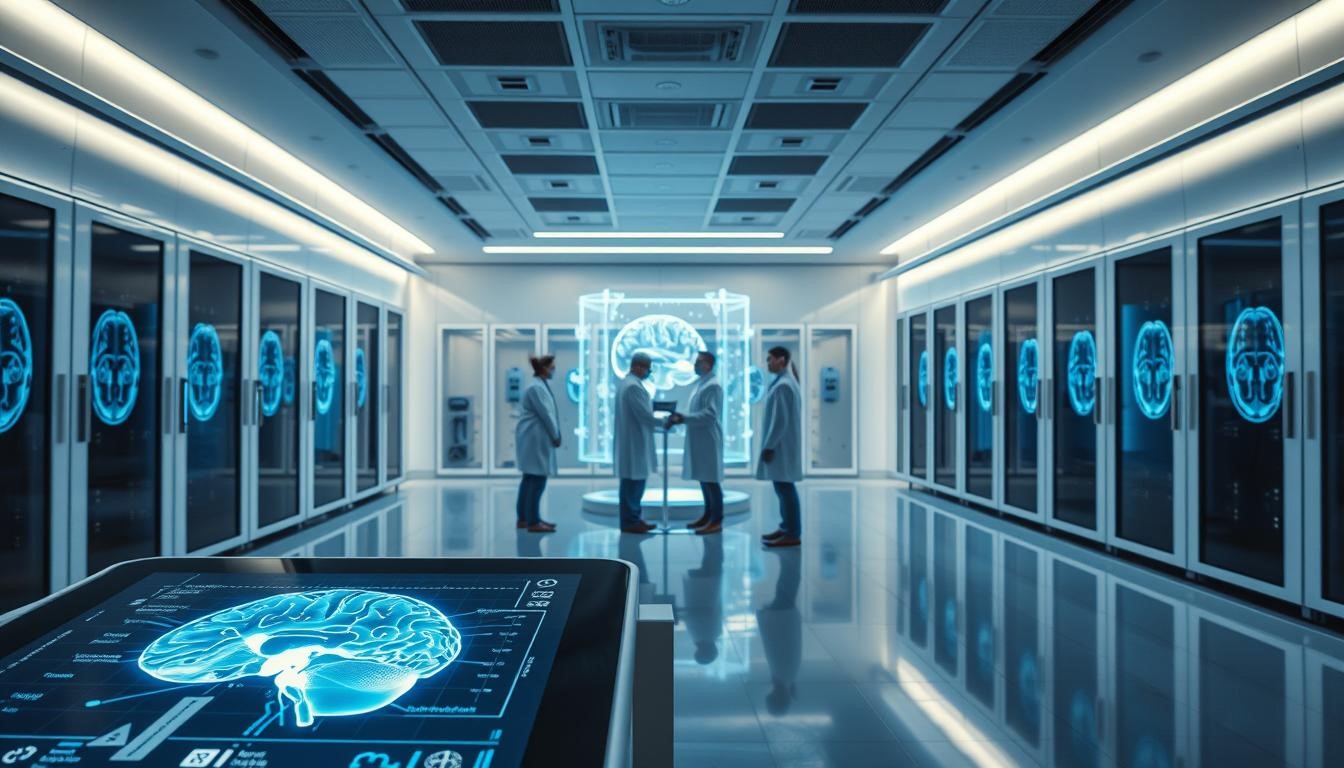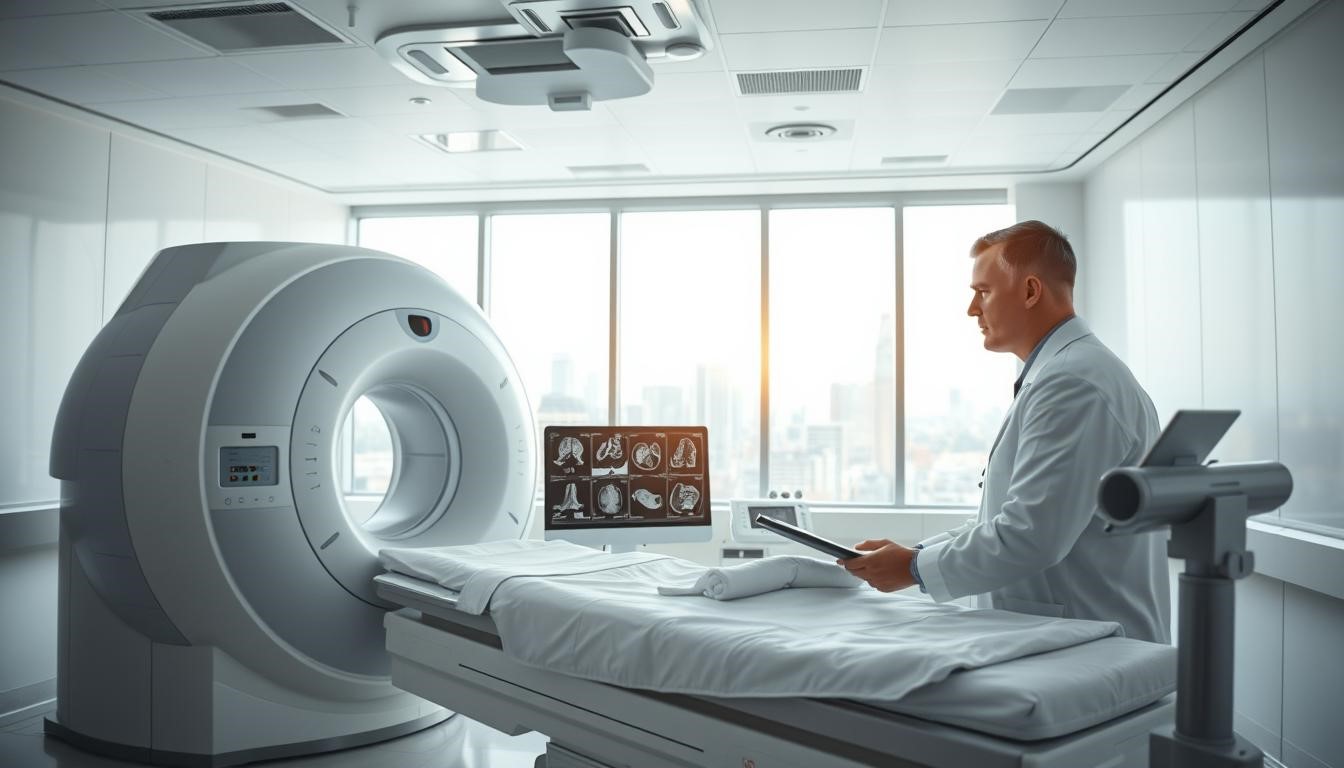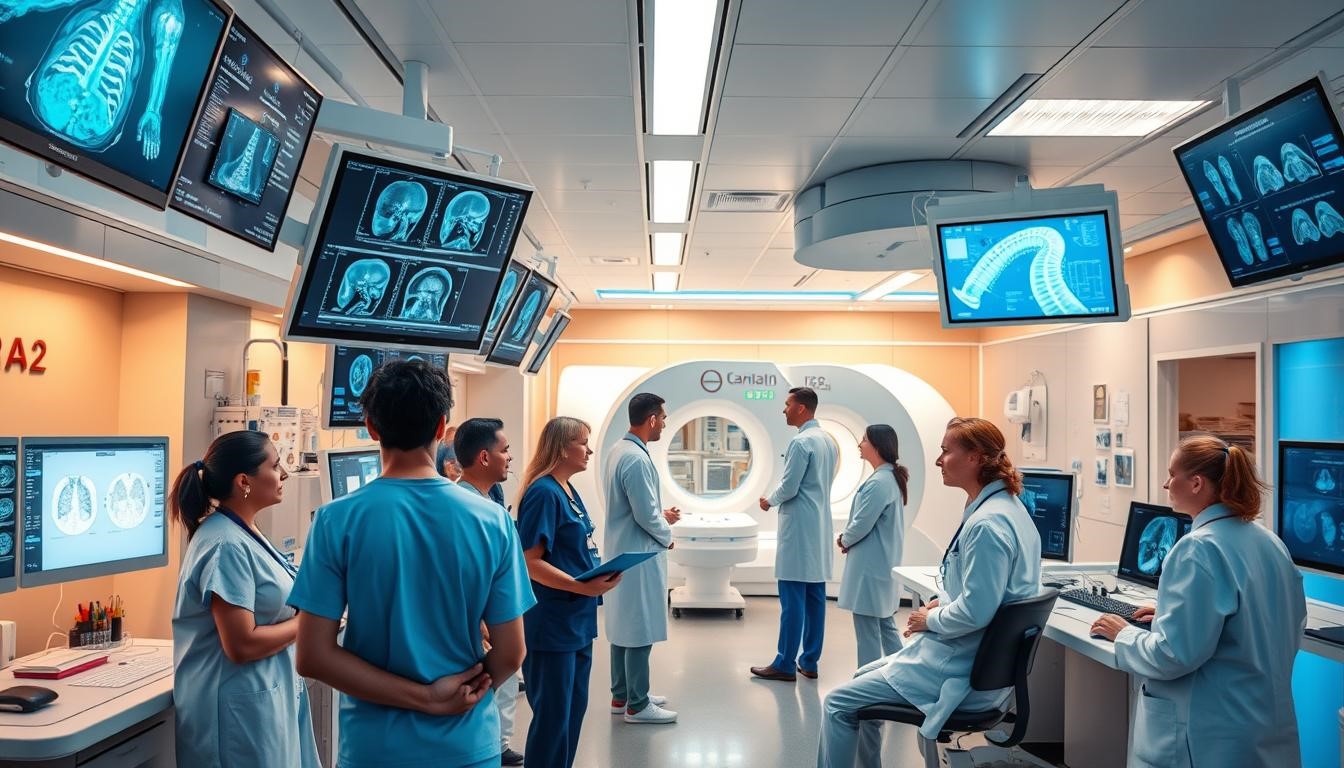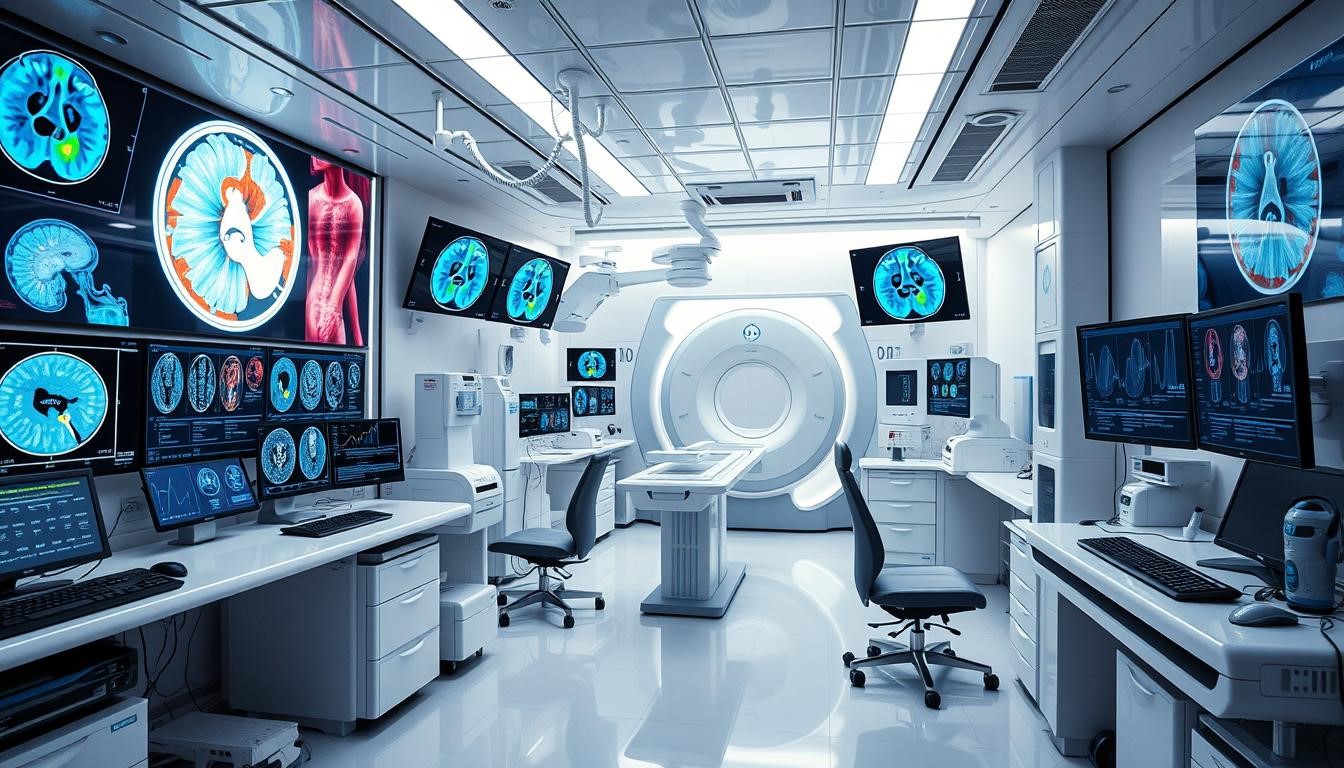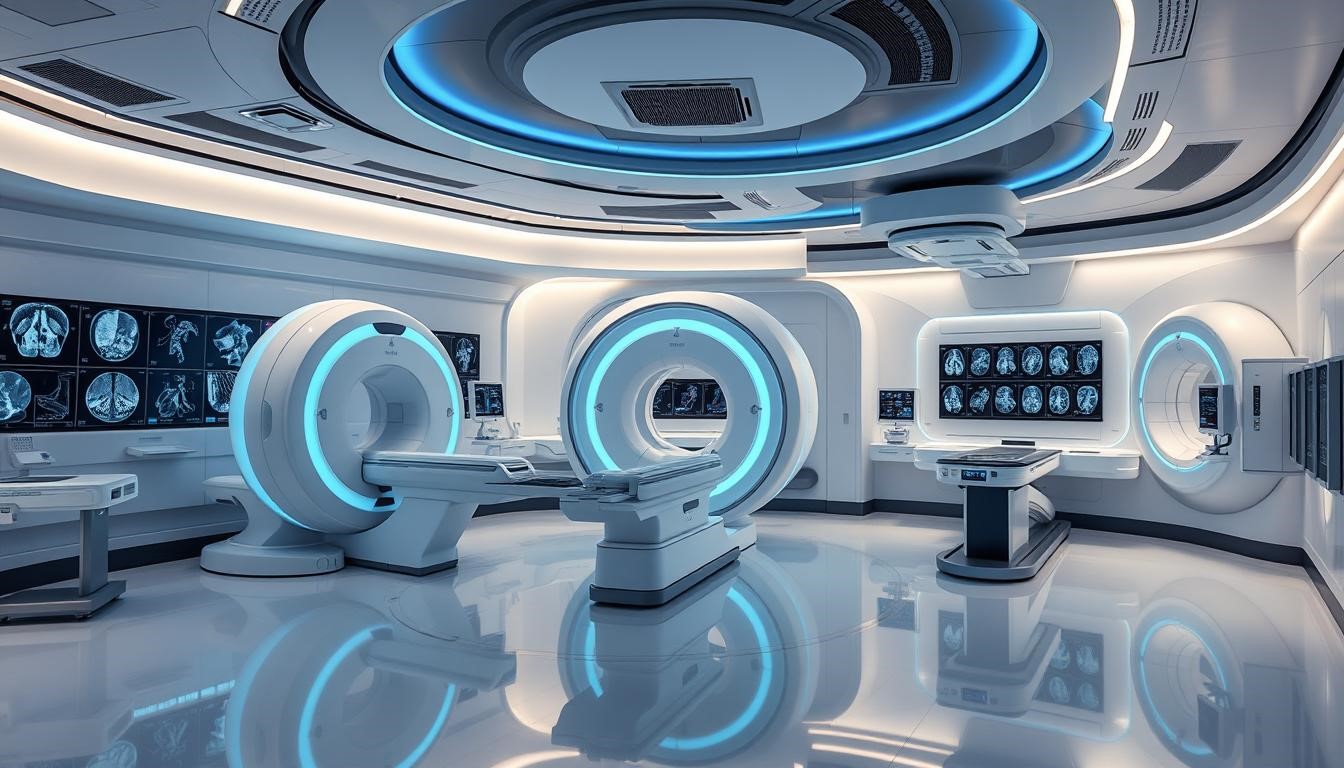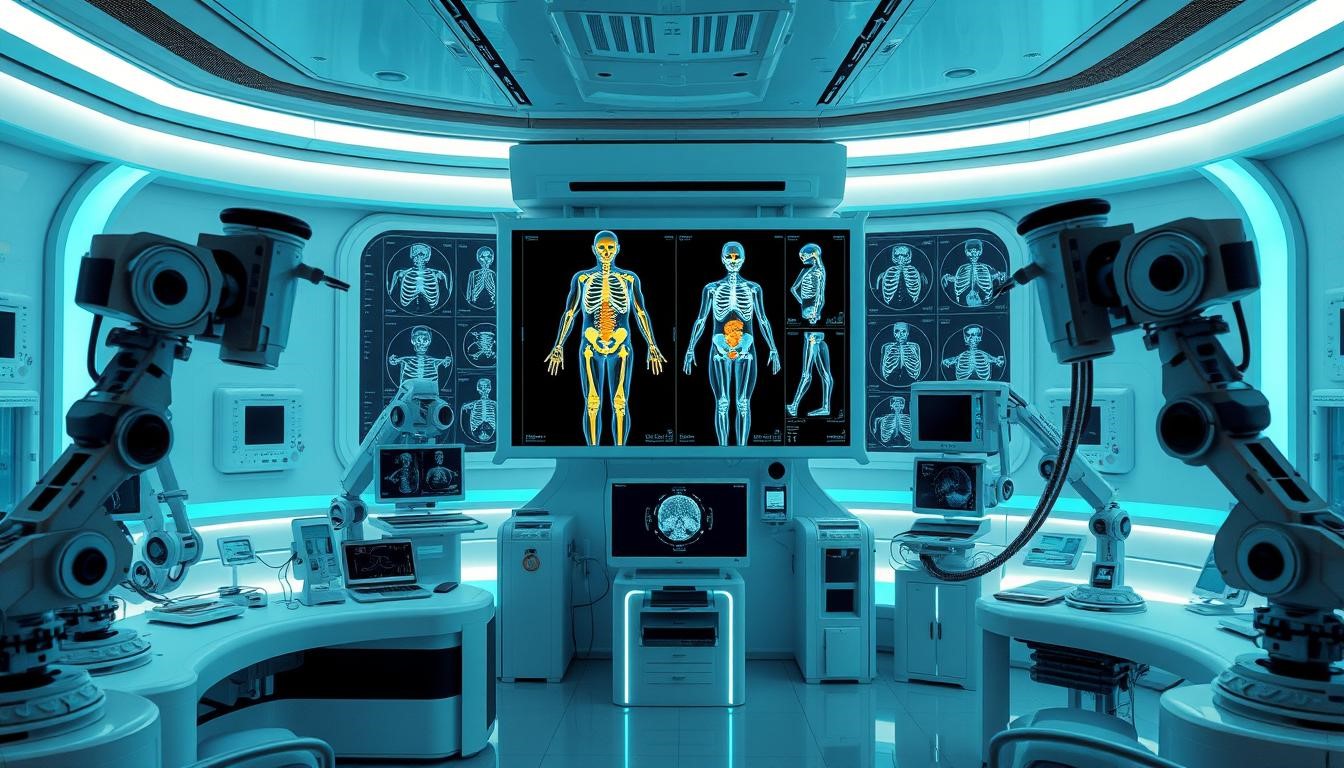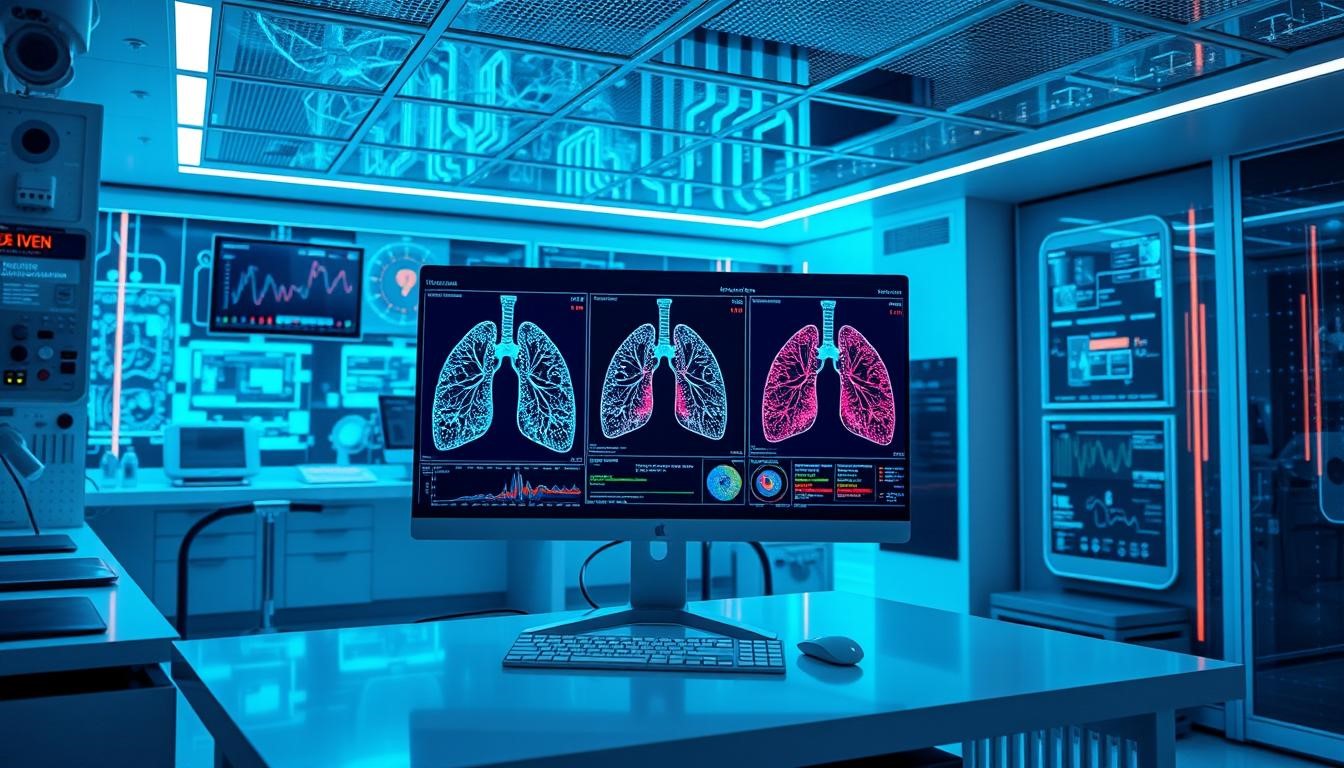The field of radiology is changing fast, needing cost-effective research methods. Old ways of doing research in radiology take a lot of time and money. They involve looking at data by hand and understanding it.
can change this, making it easier and more accurate to look at big data sets.
AI helps find patterns and trends that humans might miss. This leads to new ideas and discoveries. It can also make care better for patients.

Cost-effective research in radiology is possible with AI. It makes the research process faster and cheaper. This is because it cuts down on the need for manual data analysis.
The Current Challenges in Radiology Research
The field of radiology research faces many challenges. These issues affect different parts of research, like how studies are done and how data is handled.
Traditional Research Methods and Their Limitations
Old ways of doing research in radiology rely on manual analysis. This can be slow and full of mistakes. It also needs a lot of people and resources.
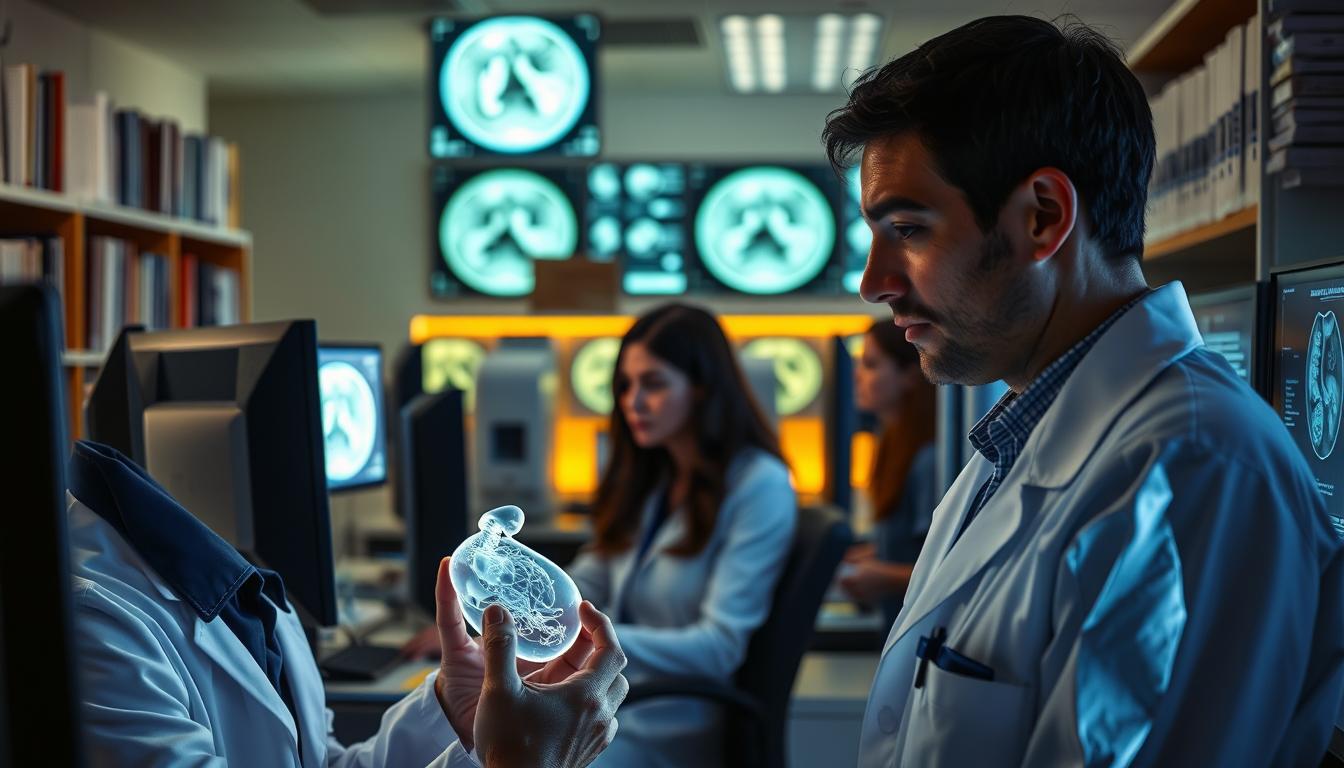
Rising Costs in Medical Imaging Studies
Medical imaging studies are getting more expensive. This makes it hard to do research without going over budget. Higher costs come from needing better technology and dealing with big data and long analysis times.
Data Management Hurdles in Radiological Research
Managing data well is key in radiology research. But, it’s a big challenge. The huge amounts of data need special systems to keep it safe and easy to use. Bad data management can cause problems and even lose data, hurting research results.
To move forward, we need to tackle these challenges. By knowing what’s holding us back, we can find new ways. For example, using AI could make research better, faster, and cheaper.
The Transformative Impact of AI in Radiology
AI is changing radiology a lot. It’s making how we look at medical images better and faster. This change is making diagnoses more accurate and quicker.
Machine Learning Algorithms for Image Analysis
Machine learning is key in AI for radiology, mainly for looking at images. These algorithms can learn from data, spot patterns, and make smart choices without being told what to do.
Supervised vs. Unsupervised Learning Approaches
Supervised learning uses labeled data to train algorithms. They learn from examples and apply this to new data. On the other hand, unsupervised learning finds patterns in data without labels. It uncovers hidden structures or groups.
Neural Networks in Diagnostic Imaging
Neural networks are a big help in medical imaging. They can spot complex patterns in images, like signs of disease.
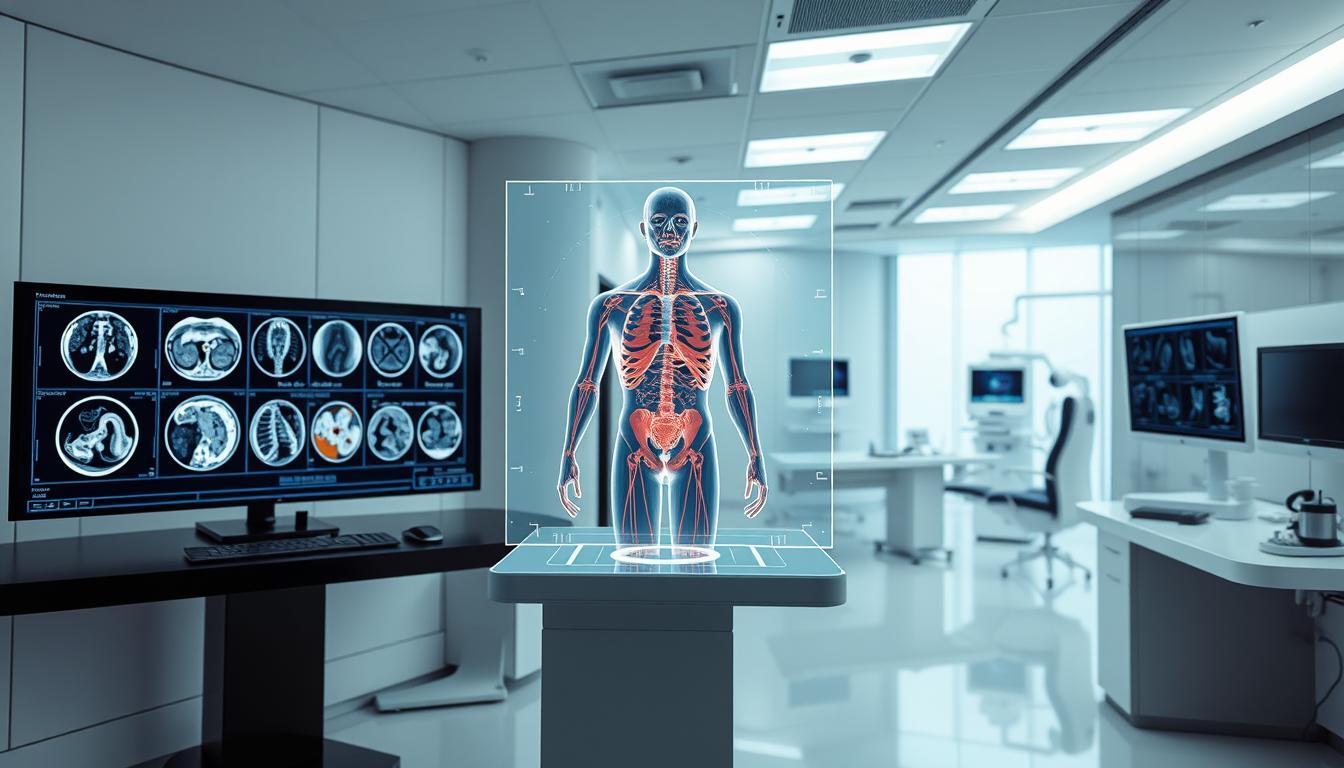
Current Applications in Clinical Settings
AI is being used more in hospitals to make diagnoses better and faster. It helps in finding problems and making the work flow smoother.
Detection and Classification of Abnormalities
AI helps find and sort out problems in medical images, like tumors or breaks. This can cut down the time to get a diagnosis and help patients more.
Workflow Optimization and Prioritization
AI also makes the work in radiology better by sorting cases by how urgent they are. This means important cases get looked at first.
Validation Methods for AI Algorithms
It’s very important to check if AI algorithms work well and are safe. This means testing them with known data and making sure they work in real situations.
By doing this, doctors can rely on AI to make diagnoses better and faster. This helps take care of patients even more.
Cost-Effectiveness of AI-Powered Radiology Research
AI makes radiology research more cost-effective and improves results. It’s not just a tech upgrade; it’s a smart financial move. It’s changing how we do medical research.
Reducing Time and Resource Requirements
AI cuts down the time and resources needed for radiology research. It does this in a few ways:
- Automated Image Analysis and Annotation: AI quickly analyzes and annotates images. This used to take a lot of time and effort.
- Streamlining Research Workflows: AI organizes and manages data. This makes the research process smoother and reduces the workload for researchers.
Improving Diagnostic Accuracy and Efficiency
AI speeds up and improves the quality of research. It brings several benefits:
- Reducing False Positives and Negatives: AI is trained to spot abnormalities accurately. This lowers the rate of false positives and negatives.
- Enhancing Radiologist Productivity: AI automates routine tasks. This lets radiologists focus on more complex cases, boosting their productivity.
Long-term ROI for Healthcare Institutions
Healthcare institutions see big returns on investment with AI in radiology. They save on labor costs, get better patient outcomes, and open up new research avenues.
Cost Comparison: Traditional vs. AI-Enhanced Research
AI-enhanced research is more cost-effective than traditional methods. It cuts down on manual data analysis, speeds up research, and boosts accuracy. All these factors lower costs.
In summary, AI in radiology research offers many benefits. It saves time and resources, improves accuracy, and boosts productivity. As healthcare adopts more AI, the long-term benefits will be significant.
Implementing AI Solutions for Cost-Effective Research
To use AI for cheaper research, radiology teams need to focus on a few key areas. Adding AI can make research faster and more accurate.
Required Infrastructure and Technology
A strong setup is key for AI in radiology. You’ll need high-performance computing hardware and advanced data storage solutions. Also, having high-quality imaging equipment is important. Make sure it works well with what you already have.
Training and Integration Strategies
Good training is vital for AI success. Radiology staff should learn about AI and how it works. A smart plan for adding AI to your work is also important.
- Develop a tailored training program for radiology staff
- Establish clear guidelines for AI algorithm validation
- Monitor and adjust AI system performance regularly
Case Studies: Successful Implementation Models
Many hospitals have made AI work in radiology research. For example, a top hospital cut image analysis time a lot. Another place used AI to boost patient results.
Ethical Considerations and Regulatory Compliance
AI in radiology raises big ethical questions. Keeping patient data private and following rules is critical. Hospitals must follow FDA guidelines and be open about their AI use.
Conclusion
AI has changed radiology, making research and diagnosis cheaper. It uses machine learning and data analysis to work faster and more accurately. This means better results and less time spent on tasks.
Using AI in radiology brings many benefits. It cuts costs, improves patient care, and boosts research speed. As more healthcare places use AI, the savings and improvements will grow. This will lead to more innovation in the field.
AI makes radiology research more efficient and affordable. This leads to better care for patients. The use of AI in radiology is exciting and full of promise for the future.

